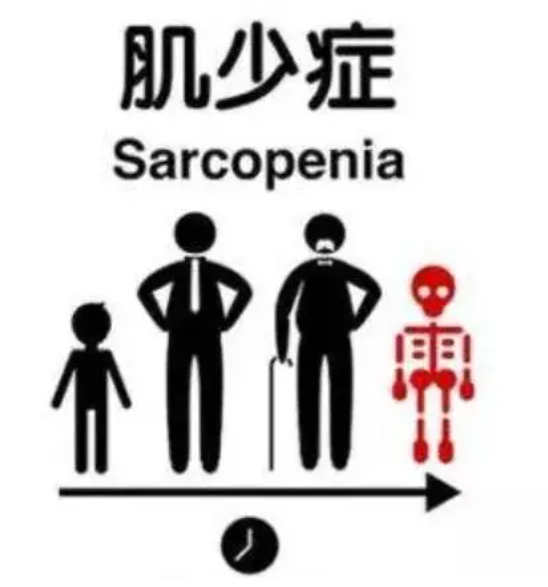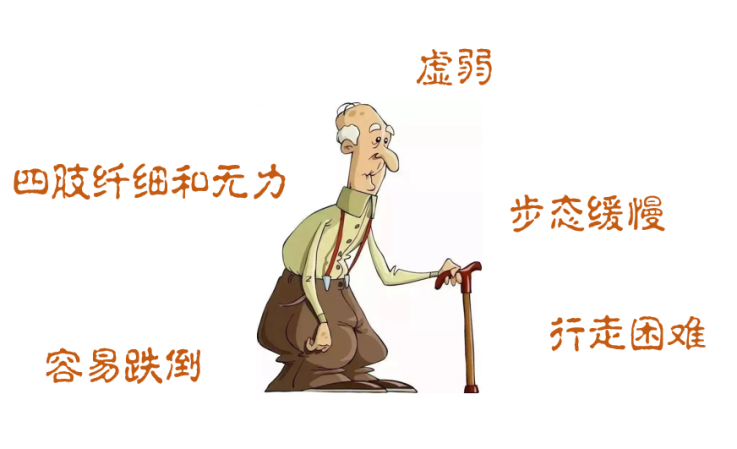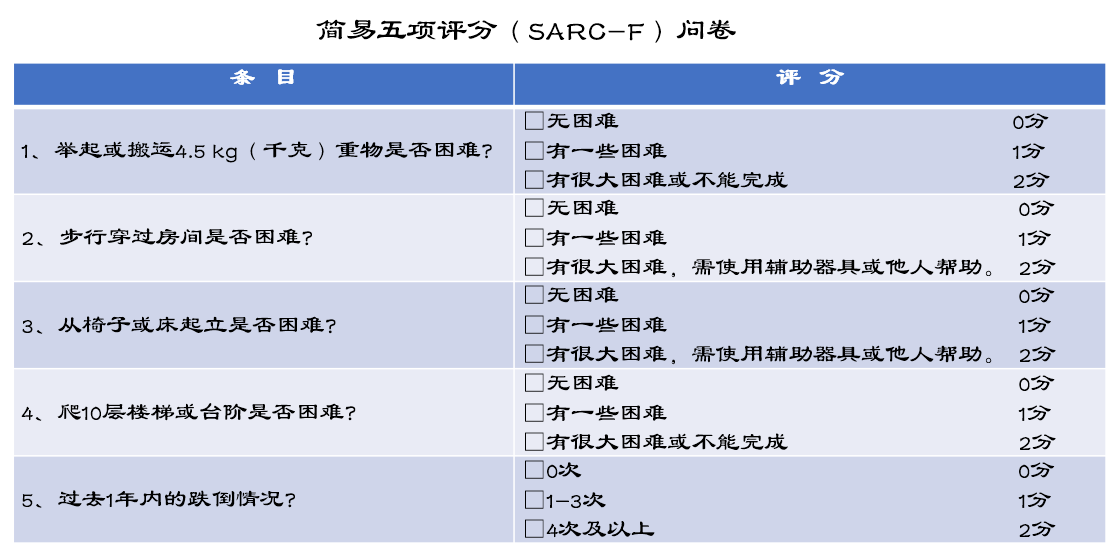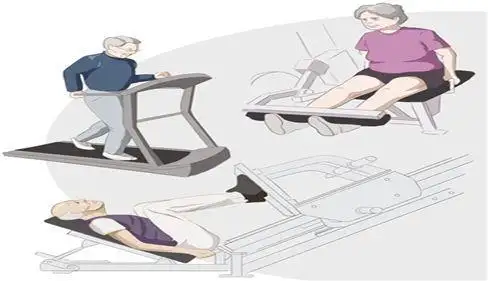Micro Popular Science: Old Age, "Muscle" can Not Be Lost
Recently, 67-year-old Uncle Li often felt tired, walking more slowly, and can not even carry a bucket of water weighing 10 kilograms. He looked at Uncle Wang next door, at the same age, still able to exercise every day, maintain "eight abdominal muscles", feel envy and distress. So, Uncle Li went to the hospital for help, and Doctor Zhen evaluated and told Uncle Li: "Uncle, you should be suffering from sarcopenia!" Uncle Li expressed very confused, what is sarcopenia? What effect does it have? Can it be treated... Let's answer Grandpa Li's questions.
 1. What is sarcopenia?
1. What is sarcopenia?
Sarcopenia, the full name of which is sarcopenia, is a progressive age-related systemic skeletal muscle disease, mainly manifested by decreased skeletal muscle mass, decreased muscle strength and/or impaired physical function [1]. More than 50 million people worldwide already have the disease, and it mostly occurs in the elderly, and the older the age, the higher the risk. Studies have shown that the prevalence of sarcopenia in community elderly people over 60 years old in China is 9.9%-40.4%, and the prevalence of elderly people over 80 years old is more than 50% [2] That is to say, one in every two people over the age of 80 May suffer from this disease. So, we must be vigilant.
 (Photo from the Internet)
(Photo from the Internet)
2. What are the hazards of sarcopenia?
Sarcopenia not only causes falls, fractures, physical disabilities, and decreased quality of life, but also is associated with prolonged hospitalization and increased hospitalization rate, resulting in a significant increase in family economic burden. In addition, sarcopenia also affects many chronic diseases, such as hypertension, diabetes, coronary heart disease, chronic kidney disease, cognitive impairment, chronic obstructive pulmonary disease, depression, and tumor [3]. Therefore, old thin is not a good thing, the elderly, more "muscle" can not be lost.

3. What are the risk factors for sarcopenia?
The risk factors for sarcopenia are complex and diverse [4, 5]. First of all, old age is an independent risk factor for sarcopenia, so we must pay attention to prevention in old age. Similarly, low body weight, lack of exercise, alcohol, smoking, poor nutrition, especially low protein intake are also high risk factors for sarcopenia, so it can be prevented by improving bad life or diet habits, which is the most economical way to prevent sarcopenia. In addition, long-term chronic diseases such as high blood pressure, diabetes, chronic kidney disease, cardiopulmonary insufficiency, tumors, depression, etc., can also increase the risk of developing sarcopenia.
4. How to screen for sarcopenia?
In simple terms, sarcopenia can be screened from 5 major manifestations and 1 questionnaire.
The five major signs are weakness, falling easily, difficulty walking, slow gait, slender limbs, and weakness [6]. If we have these manifestations, we need to be alert to the occurrence of sarcopenia.
 1 questionnaire refers to the Simple five-item score (SARC-F) questionnaire [7]. We can quickly screen by answering 5 questions. If the score is more than 4 points, it indicates that sarcopenia may exist, and it is recommended to go to the hospital for further diagnosis.
1 questionnaire refers to the Simple five-item score (SARC-F) questionnaire [7]. We can quickly screen by answering 5 questions. If the score is more than 4 points, it indicates that sarcopenia may exist, and it is recommended to go to the hospital for further diagnosis.
 5. What are the prevention and intervention measures for sarcopenia?
5. What are the prevention and intervention measures for sarcopenia?
At present, the prevention and intervention measures of sarcopenia are mainly summarized as two points: increasing nutrition and strengthening exercise.
In terms of nutrition, we should first pay attention to supplementing protein. In general, the daily protein intake of the elderly over the age of 60 is 1.0 to 1.2 grams/kg [8], of which high-quality protein eggs (such as beef, whey protein, etc.) is best up to 50%, for example, an elderly person weighing 65kg has a daily protein intake of about 78g, which can be matched with 200g lean pork, 2 eggs, and a bottle of 250ml milk. In addition, the diet needs to add some foods rich in polyunsaturated fatty acids such as deep-sea fish oil, Marine fish, etc.; And foods rich in vitamins D, A, C, E, zinc, selenium, etc., such as dark vegetables and fruits. If the elderly have decreased gastrointestinal absorption function or suffer from basic diseases with dietary restrictions, they can go to the hospital and be treated with enteral nutrition preparations as nutritional supplements under the guidance of doctors.
 In terms of exercise, the elderly should reduce sitting, stay in bed, and appropriately increase exercise when physical conditions permit. We first recommend the selection of resistance exercises according to their own conditions, such as sitting leg lift, static squat against the wall and pulling the elastic band, it is recommended to 20-30 minutes a day, 3 times a week or more; In addition, we should adhere to some aerobic exercises such as fast walking, jogging, tai chi, etc., and accumulate 40-60 minutes a day, more than 3 times a week [9].
In terms of exercise, the elderly should reduce sitting, stay in bed, and appropriately increase exercise when physical conditions permit. We first recommend the selection of resistance exercises according to their own conditions, such as sitting leg lift, static squat against the wall and pulling the elastic band, it is recommended to 20-30 minutes a day, 3 times a week or more; In addition, we should adhere to some aerobic exercises such as fast walking, jogging, tai chi, etc., and accumulate 40-60 minutes a day, more than 3 times a week [9].

(Photo from the Internet)
Uncle Li solved the doubts, went home and began to adjust the diet and exercise according to the doctor's advice. Half a year later, Uncle Li came to the hospital for a follow-up visit, he said happily: "Doctor Zhen, I feel much better, every day can have spirit, walk with wind, ha ha ha!"
reference
[1] Cruz-Jentoft A J, Bahat G, Bauer J, et al. Sarcopenia: revised European consensus on definition and diagnosis[J]. Age and Ageing, 2019,48(1):16-31.
[2] Mayhew A J, Amog K, Phillips S, et al. The prevalence of sarcopenia in community-dwelling older adults, an exploration of differences between studies and within definitions: a systematic review and meta-analyses[J]. Age Ageing, 2019,48(1):48-56. (in Chinese)
[3] Xia L, Zhao R, Wan Q, et al. Sarcopenia and adverse health-related outcomes: An umbrella review of meta-analyses of observational studies[J]. Cancer Med, 2019,9(21):7964-7978. (in Chinese)
[4] Simsek H, Meseri R, Sahin S, et al. Prevalence of sarcopenia and related factors in community-dwelling elderly individuals[J]. Saudi Med J, 2019, 40 (6) : 568-574.
[5] Alexandre T, Duarte Y, Santos J, et al. Prevalence and associated factors of sarcopenia, dynapenia, and sarcodynapenia in community-dwelling elderly in Sao Paulo - SABE Study[J]. Rev Bras Epidemiol, 2019,21Suppl 02(Suppl 02):e180009.
[6] Chen L K, Woo J, Assantachai P, et al. Asian Working Group for Sarcopenia: 2019 Consensus Update on Sarcopenia Diagnosis and Treatment[J]. J Am Med Dir Assoc, 2019,21(3):300-307. (in Chinese)
[7] Malmstrom T K, Morley J E. SARC-F: a simple questionnaire to rapidly diagnose sarcopenia[J]. J Am Med Dir Assoc, 2013,14(8):531-532.
[8] Deutz N E, Bauer J M, Barazzoni R, et al. Protein intake and exercise for optimal muscle function with aging: recommendations from the ESPEN Expert Group. Clin Nutr, 2014,33(6):929-936. (in Chinese)
[9] MIN Wenjun, Chen Yamei, Lu Qun, et al. Summary of best evidence for exercise intervention in elderly patients with sarcopenia [J]. Journal of PLA Nursing, 202,39(03):75-78. (in Chinese)
Author: Yang Wenli Ye Chenjing, Ruijin Hospital, Shanghai Jiao Tong University School of Medicine
(The opinions expressed are solely those of the author. Some pictures in this article are from the Internet, if there is infringement, please contact to delete)

